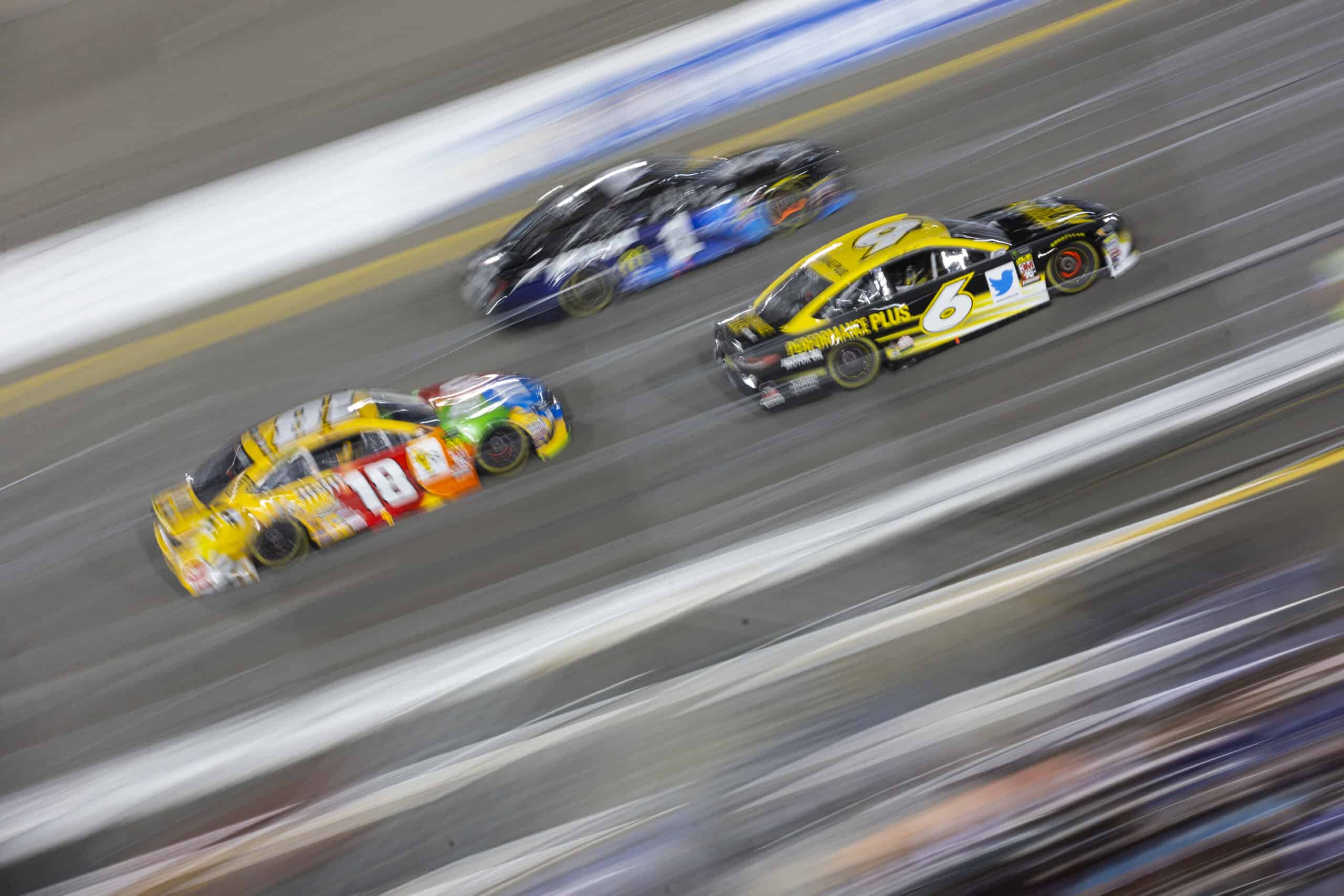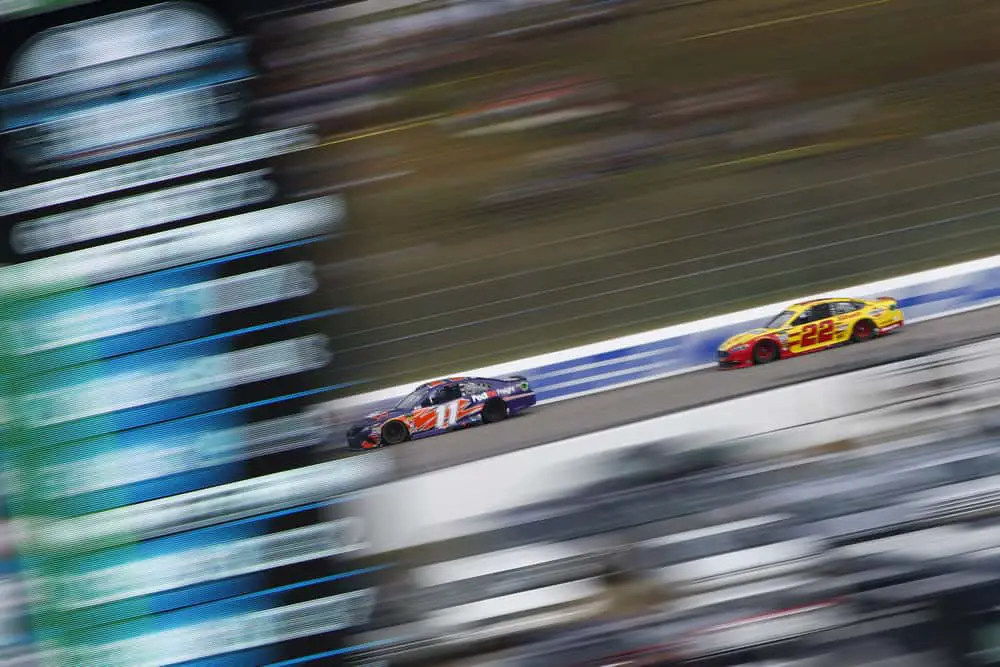When it comes to motor racing, the world of NASCAR is known for its high-octane competition and thrilling high-speed drama. One question that often arises among enthusiasts and casual fans alike is just how fast can a NASCAR car go?
Over the years, advancements in technology and engineering have continuously pushed the boundaries of what these cars are capable of achieving.
Of course, safety remains a paramount concern in the world of NASCAR, with stringent regulations and constant innovation geared toward protecting drivers, teams, and spectators. In the following sections, we will further examine the specifics of these incredible cars and discuss the ways in which the sport has evolved to maintain a balance between high-speed excitement and ensuring the safety and well-being of all involved.
Understanding NASCAR Speeds
Maximum Speed
NASCAR cars can reach incredible speeds, with the fastest cars clocking in at around 200 miles per hour (mph).
These speeds are achieved due to a combination of powerful engines, lightweight materials, and precise aerodynamic designs. However, it is important to remember that several factors can influence a car’s maximum speed, such as engine size, tire grip, and track conditions.
Speedway
A key factor in determining NASCAR speeds is the makeup of the speedway itself. Oval-shaped tracks range from short tracks, intermediate tracks to superspeedways. These tracks can vary in length from 0.5 miles to 2.5 miles, and the layout greatly impacts the cars’ top speeds.
For instance, at Daytona International Speedway, which is a 2.5-mile, high-banked track, NASCAR vehicles regularly reach top speeds of nearly 200 mph.
In contrast, on shorter and flatter tracks like Martinsville Speedway, which is just 0.526 miles long, average speeds tend to be closer to 100 mph.
Miles per Hour
To gain a better understanding of how fast NASCAR cars are, take a look at these average speeds from various types of speedways:
- Short Tracks: 90 – 110 mph
- Intermediate Tracks: 150 – 170 mph
- Superspeedways: 180 – 200 mph
In addition to top speeds, NASCAR drivers must also consider their average speed, as maintaining a consistently high speed is critical to achieving success on the track. With such high speeds, skillful driving and concentration are essential to avoiding accidents and securing a victory.
Fastest NASCAR Cars and Tracks
Fastest Speed
The fastest speed ever recorded in a NASCAR race is 216.51 mph, which was accomplished by Bill Elliott in a qualifying run at Talladega Superspeedway in 1987.
Since then, restrictor plates have been implemented to restrict the horsepower of the engines, leading to lower top speeds in races. However, recent advances in technology have allowed drivers to come close to these record-breaking speeds again.
Fastest Tracks
Some of the fastest tracks in NASCAR include:
- Talladega Superspeedway: With its high banking and long straightaways, Talladega is known for producing some of the fastest speeds in NASCAR. Its current 2.66-mile layout has also seen some intense pack racing, adding to the excitement for fans.
- Daytona International Speedway: The 2.5-mile Daytona track has a rich history and is famous for hosting the prestigious Daytona 500. The high-banked turns allow drivers to reach high speeds while drafting each other, resulting in thrilling racing action.
- Michigan International Speedway: This 2-mile D-shaped oval track boasts 18-degree banking in the turns and has seen drivers achieving speeds nearing 220 mph during testing. In races, the speeds usually hover around 190-200 mph.
Fastest Race Cars
Throughout NASCAR’s history, several race cars have stood out for their exceptional speed and performance. Some noteworthy ones include:
- 1987 Ford Thunderbird: Driven by Bill Elliott, this car holds the record for the fastest speed in NASCAR history. It’s powered by a V8 engine with a top speed of over 216 mph.
- 2007 Chevrolet Monte Carlo SS: Driven by Jeff Gordon, this car secured a track record at Talladega with a speed of 201.293 mph during a practice session.
- 2018 Ford Fusion: Driven by Brad Keselowski, this car clocked a top speed of 211.413 mph during a test session at Michigan International Speedway.
These speeds, tracks, and race cars demonstrate the quest for speed that constantly drives NASCAR teams to push the limits of their vehicles and engineering capabilities.
Fastest Drivers
- Rusty Wallace – 216.309 mph at Talladega Superspeedway (not official NASCAR race), June 9, 2004.
- Bill Elliott – 212.809 mph at Talladega Superspeedway, April 30, 1987.
- Bill Elliott – 210.364 mph at Daytona International Speedway, February 9, 1987.
- Geoff Bodine – 197.478 mph at Atlanta Motor Speedway, November 16, 1997.
- Dale Earnhardt – 197.346 mph at Talladega Superspeedway, May 10, 1990.
- Bobby Labonte – 194.678 mph at Texas Motor Speedway, November 5, 2000.
- Tony Stewart – 193.624 mph at California Speedway, February 25, 2002.
- Mark Martin – 193.361 mph at Michigan International Speedway, August 19, 1999.
- Terry Labonte – 195.728 mph at Charlotte Motor Speedway, October 10, 1999.
- Dale Jarrett – 191.091 mph at Pocono Raceway, June 11, 2002.
The Role of Drivers and Pit Crew
Drivers
The drivers in NASCAR play a crucial role in determining the speed of a car. They must possess exceptional skill and precision, as their driving techniques directly impact the car’s performance on the track. Some of the factors that drivers need to manage include:
- Throttle control: Smooth application of the throttle ensures better tire management, which can lead to higher speeds.
- Braking: Proper use of brakes helps maintain speed through corners and reduces tire wear.
- Line selection: Choosing the right line can minimize the track distance traveled, leading to faster lap times.
Pit Crew
The pit crew is another essential component in achieving high speeds in NASCAR. The efficiency and speed at which they perform pit stops can significantly influence a car’s overall performance.
Several tasks are accomplished during a pit stop, including:
- Refueling: A quick refuel allows the car to spend less time in the pit and more on the track.
- Tire changes: Replacing worn tires ensures optimal grip and handling, crucial for maintaining high speeds.
- Adjustments: Making necessary adjustments to the car’s suspension, aerodynamics, or other components can improve performance.
Types of NASCAR Races
Different Types
NASCAR hosts a variety of races throughout the year, showcasing different types of race cars and tracks such as:
NASCAR Cup Series
The premier championship series in NASCAR features full-size stock cars competing on various tracks. The cars are roughly based on production models, with significant modifications for racing. The NASCAR Cup Series has a diverse selection of tracks, including short ovals, speedways, and road courses.
Xfinity Series
This is the second-tier championship series in NASCAR, often seen as a stepping stone for drivers aiming to compete in the NASCAR Cup. The Xfinity Series uses slightly smaller and less powerful vehicles than the NASCAR Cup but still provides exciting and competitive racing.
Camping World Truck Series
The Camping World Truck Series features pickup truck-style vehicles competing on similar tracks as the NASCAR Cup and Xfinity Series. The trucks, though larger and heavier than the stock cars, can reach high speeds and offer a unique racing experience for both drivers and spectators.
Modified Series
The NASCAR Whelen Modified Tour is a short-track racing series with cars featuring open-wheel designs. These vehicles are designed to promote close racing and contact, resulting in an entertaining spectacle for fans. They race primarily on short tracks and road courses.
Regional Racing
NASCAR also has regional racing series designed to encourage local talent and provide exciting racing opportunities across the country. Some of these series include the NASCAR K&N Pro Series East and West, as well as the NASCAR Whelen All-American Series.
Popular Motorsports
Among the popular motorsports, NASCAR holds a prominent position. Originating in the United States, it has garnered a massive following around the world.
NASCAR, which stands for the National Association for Stock Car Auto Racing, primarily features stock cars racing at high speeds on various tracks.
Besides NASCAR, there are other notable types of motorsports that captivate racing enthusiasts. These include:
- Formula 1: Arguably the most famous motor racing event globally, Formula 1 showcases advanced automotive technology combined with the highest level of driving skills.
- MotoGP: Featuring two-wheeled motorbike racing, MotoGP is the premier motorcycle racing series that sees professional riders compete on high-speed tracks.
In NASCAR, stock car racing began back in the 1940s, and it has evolved considerably over time. The goal of every driver is to be the fastest on the track, pushing the limits of their vehicles.
Typically, a NASCAR stock car can reach speeds upwards of 200 mph (320 km/h). However, some tracks with longer straights have seen vehicles attain even higher speeds.
To compare, Formula 1 cars can reach speeds exceeding 220 mph (354 km/h), while MotoGP motorcycles can hit 220 mph (354 km/h).
Despite these differences in top speeds, each motorsport offers a unique combination of thrills, excitement, and competition.
Restrictor Plates and Their Impact
Plates
Restrictor plates are metal plates with precisely sized holes that are placed between the carburetor or throttle body and the intake manifold in a NASCAR vehicle. The purpose of these plates is to limit the amount of air and fuel mixture that can enter the engine, which in turn reduces the horsepower produced.
The use of restrictor plates has a significant impact on the overall speed of a NASCAR car.
Restrictor plates were introduced in response to a series of high-speed accidents and rising concerns about driver safety. By decreasing the horsepower produced; these plates help to limit the top speed of a NASCAR vehicle, making the sport safer for both drivers and spectators.
The use of restrictor plates is not without controversy, however. Some argue that the reduced horsepower negatively affects the quality of racing, as it can make it more difficult for drivers to overtake one another.
Others believe that the plates are a necessary safety measure to protect drivers and maintain the integrity of the sport.
The size of the holes in a restrictor plate varies depending on the track and race conditions. In general, the smaller the holes, the greater the reduction in horsepower and speed. This reduction can be significant; a smaller restrictor plate can reduce a car’s horsepower by around 100 to 200 hp compared to its unrestricted output.
Despite their impact on speed, NASCAR cars can still achieve top speeds of around 180-200 mph.




